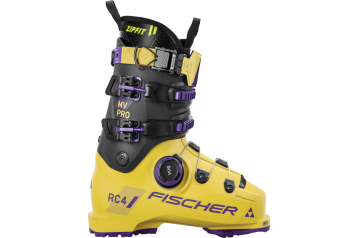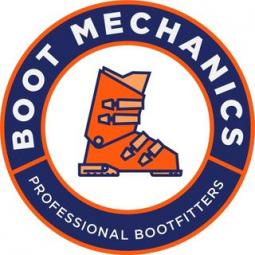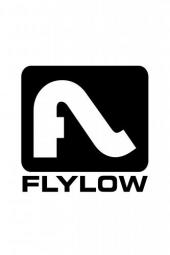There's a lot going on in the Fischer RC4 Pro MV DYN BOA Vac ZF's naming structure, and its entire meaning warrants explanation--it's a good story! The Pro level RC4 MV is the 130-flex flagship of the medium width, 100mm all-mountain boot group. Here, the DYN moniker indicates that it's outfitted with tech fittings at the toe (a rarity in fixed-cuff boots). The Vac means, you guessed it, the boot's lower shell is made of Fischer's low-temp, Vacuum-moldable Vacuplast material. ZF stands for the lace-up, cork-powered ZipFit liner that comes with this boot.
Our test team had a blast unlocking all the potential that the RC4 Pro MV DYN Boa Vac ZF's unique set of features had to offer them. Some testers' eyes bugged out (in a good way) at the unicorn-like confluence of expert all-mountain skiing amenities: 130-flex, ZipFit liner, tech fittings. Others thought that the unicornicopia of elements slotted the Pro MV into a somewhat niche sub-category and in turn limited its broader appeal. Both camps are right, we think.
The nature of the ZipFit liner is one that had a polarizing effect on our testers. The ZipFit fans on the team loved the close lace-up wrap around the lower leg shaft and smoothly snug transition of tension into the instep and over the top of the foot. They always rave about the dense but shape-matching fit of the cork-and-resin filled ankle pockets and tongue--and they're okay with the extra warm-up time or heat-molding required to get the putty-like stuff to move, mold and stop "feeling weird." The ZF fans have no problem with a liner-on-the-foot-first entry into the shell and in fact, will point to the protection the liner offers the foot's bony instep as it's jammed past the boot throat's plastic overlap as yet another benefit to ownership.
ZipFit skeptics on our team were first hung-up on having to don the liner first then stuff it into the shell like a race boot (and trying to leave a ZipFit liner in the shell for entry has its own set of challenges). They were also temporarily flummoxed by the first fit of the ZF liner--it invariably had molded to the last tester's ankles, and initially would feel foreign to their own foot shape. Over the course of ten minutes of wear time inside while testers conducted their dry testing the liner would warm and form and if those testers took notice, they'd have to revise their earlier fit impressions in a positive direction. Other testers took advantage of a quick liner warm-up using the test center hot stacks or convection oven to accelerate the fit-matching process. For testers (and prospective buyers) who are uninitiated to the entry and molding particulars of the ZipFit there's a learning curve to be traveled. For those who are open-minded and patient, the reward is almost always worth the effort.
The fit of this medium is noticeably snug in the rearfoot and lower leg shaft, testers said. It's also noticeably open in the forefoot and toebox, they agreed. Both of these fit characteristics are amplified by the ZipFit liner, as the overall fit is a combination of shell shape and liner, like any other boot. Some testers love this fit map--a tight rear end with legroom in the forward cabin. Other testers didn't love this fit tension differential. The truly "V-shaped" foot (skinny heel, wide forefoot and toes) is a match made in heaven with the RC4 Pro MV DYN Vac ZF.
The fans on our team showed their love with generous scores. The skeptics downgraded theirs, mainly in the Convenience metric and a bit in the Initial Fit parameter. The resulting score average isn't a fair reflection of the boot's merit when matched with the right skier, we don't think.
How this boot skis was never in question for our test team. Over twelve separate tests they gave its Quickness and Steering score a perfect 5.0. Its Dynamic Balance and Edge Power scores were both 4.80's. This is a boot built for accomplished skiers who are looking for serious downhill performance and who are not thwarted by a lace-up liner, plug-style entry or bright yellow. Add tech fittings to the toe for this kind of all-mountain charger and it's value-added. Can you ascend with skins without a releasable cuff? Sure you can, you just don't want to go for hours like that. Can you crush the descent when you have a full-blown, fixed-cuff 130 on your foot after you trudge your way up--you sure as hell can.
But can you wear the yellow? That's another question entirely, but if you're a skier who is not daunted by the other unicorny elements here, then yes, you most certainly can.










Kudos
Caveats